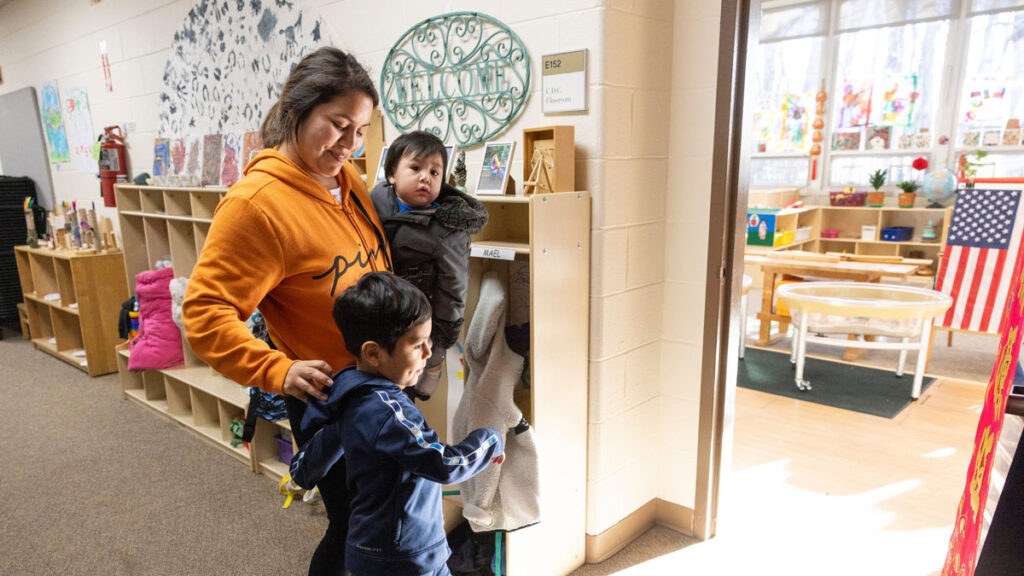This month, federal student loan repayment is restarting for 43 million Americans. The student loan system is coming back online at a time when record-high inflation has dramatically increased the cost of necessities like housing and food, causing many borrowers to struggle financially. Fortunately, borrowers have a few repayment options to help ease the financial strain. It’s not too late for borrowers to create a plan for how to handle the resumption of payments.
What Everyone With Federal Student Loans Should Do
First, borrowers should log in to studentaid.gov to verify their loan servicer. Loan servicers contract with the federal government to handle billing and other administrative support services for borrowers — including processing payments and helping borrowers enroll in an income-driven repayment (IDR) plan or consolidate a loan. Once a borrower knows who their servicer is, they should log in to their account or call their servicer (See Table 1), and then update their contact information and check their outstanding loan balance, monthly payment, and interest rate. Borrowers can also use the Loan Simulator to find their best repayment options and strategy.
Table 1: Federal Student Loan Servicer Contact Information
Source: Studentaid.gov
*(TTY: 1-877-825-9923 for the deaf or hard of hearing)
After updating their contact information and reviewing their account and payment information, borrowers should determine whether the payment fits within their budget. If a borrower can pay, they should update their payment information. Borrowers who enroll in autopay may be eligible for a 0.25% interest rate reduction.
Repayment Options for Borrowers Concerned About Their Ability to Repay
Borrowers who will struggle with repayment should contact their loan servicer to discuss options like income-driven repayment (IDR) plans and the student loan repayment “on-ramp.”
Income-Driven Repayment Plans
Income-driven repayment plans use a borrower’s income and family size to determine their monthly payment. Borrowers with incomes below 225% of the federal poverty line, or $32,800 in 2023, can have payments as low as $0. The Saving on a Valuable Education (SAVE) Plan is the newest and most affordable IDR plan. Borrowers should call their loan servicer to find the best IDR plan for their situation. Borrowers can also visit this website to apply for SAVE and other IDR plans.
All borrowers will have to recertify within a year of restarting payment, but they should check with their servicer to determine when to submit new income information for recertification. Borrowers should also apply for SAVE, if they think it will be more affordable than their previous IDR plan.
Repayment “On-Ramp”
The 12-month repayment on-ramp is designed for the most vulnerable borrowers. The on-ramp is automatic, so borrowers don’t need to take any action to be covered by the protections it offers. From October 1, 2023, to September 30, 2024, missed payments will not result in delinquency or default and will not be reported to credit or debt collection agencies.
During this time, interest will accrue, but not capitalize. This means the accrued interest won’t be added to your principal balance after the on-ramp ends, so you won’t be paying interest on interest. However, the amount owed will increase. Months spent using the on-ramp will not count as qualifying payments for IDR cancellation or Public Service Loan Forgiveness.
Fresh Start
Borrowers who had federal student loans in default prior to the payment pause should look into Fresh Start, a temporary program meant to move borrowers with defaulted loans into good standing. Fresh Start automatically restores a borrower’s access to federal financial aid. To apply for Fresh Start, use one of the following options:
- Go to https://myeddebt.ed.gov/
- Call 1-800-621-3115 (If you are deaf or hard of hearing, the TTY number is 1-877-825-9923).
- Send a letter to P.O. Box 5609, Greenville, TX 75403. In the letter, include your name, Social Security Number, date of birth, and note that “I would like to use Fresh Start to bring my loans back into good standing.”
After a borrower is approved for Fresh Start, their loans will be transferred to a loan servicer, their loan status will return to “in-repayment,” and their record of default will be removed from their credit report. Borrowers have until September 30, 2024, to apply for Fresh Start. Once a borrower’s loans are back in good standing, they can enroll in an IDR plan.
What Should Borrowers Who Work in Public Service Do?
Borrowers with Direct Loans who work full time for the government or a qualifying nonprofit employer might be eligible for Public Service Loan Forgiveness (PSLF). PSLF discharges a borrower’s remaining balance after they make 120 (10 years) of qualifying monthly payments. If a borrower is already enrolled in PSLF, they should contact MOHELA, the loan servicer for PSLF, to ensure their information is up to date. Borrowers who are not currently enrolled should use the PSLF Help Tool.
The resumption of federal student loan repayments may put financial strain on borrowers, but there are options available to help ease the burden for those who are struggling.







